By Guy Leitch
Images Andre Venter
Of all the aircraft we have tested over the past 30 years, the rare and humble Vans RV-3 is right up there with the most significant.
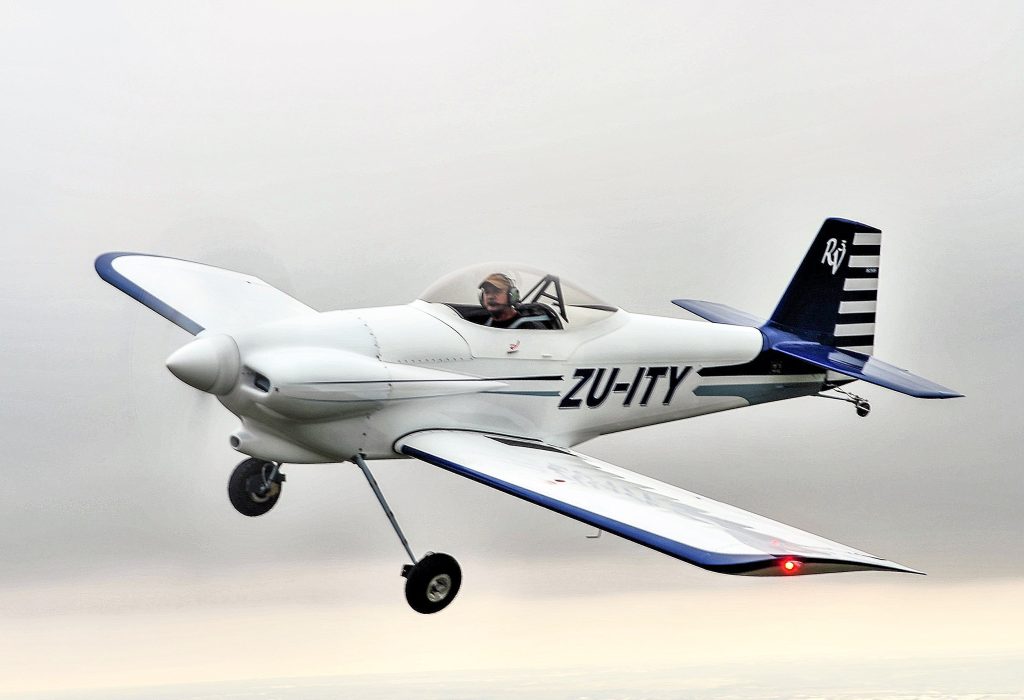
It was the diminutive RV-3 that set the stage for Van’s Aircraft to become the experimental and homebuilding aircraft giant, with over 12,000 RVs already flying, and many more under construction.
The RV-3 brought about a quiet revolution in general aviation, yet few if any, have acknowledged the massive contribution his small single place aircraft has made. What the RV -3 succeeded in doing was to make a simple aircraft that has phenomenal performance at both top end and slow speed, available to many who were tired of boring Wichita ‘spam cans’.
When the RV-3 first flew in 1973, reviewer Bud Davisson wrote; ‘There was a time, not long ago, when the term homebuilt meant an aeroplane that could go like blazes, but came down final with all the grace and docility of a torpedo. Or, if it were a slow, easy-to-land aeroplane, it couldn’t outrun an asthmatic hummingbird. It was axiomatic that a homebuilt aeroplane usually (note, I said usually) couldn’t handle both ends of the speed or talent spectrum. It was either a fast, raunchy-handling dude, or a slow, rather matronly machine.”
The RV-3 changed that. Vans Aircraft founder Richard Van Grunsven was a mechanical engineer, and believed that aircraft designers needed to ‘get back to first principles’. Those first principles still are: keep it light and simple. The RV-3 is embodiment of those first principles.
I first met Richard Van Grunsven at Aero Friedrichshafen in about 2010 and he was one of the most understated aircraft CEOs as he lets his aircraft speak for themselves. He has never felt the need to advertise of otherwise promote his aircraft.
The RV-3 On the Ground
There are just two RV-3s in South Africa, and the subject of this review, ZU-ITY is the most recent having been competed in 2023 by Joburg builder Neil Murray.
The first impression is that it’s not as small as many other single-seaters. With 90 square feet of wing area, it’s as big as many two-place homebuilts. (The two-place KR-2 has 80 sq feet of wing).
In line with the ‘keep it simple’ philosophy, it has conventional riveted aluminium construction with a square ‘Hershey bar’ wing and a side-hinged bubble canopy. The landing gear is spindly tubular steel. For ZU-ITY, Neil Wallace went for the maximum recommended power with a 160hp Lycoming IO-320.
Unlike the RV-4 and RV-8s sliding canopy, the -3 has a simple side-hinged canopy. Neil Wallace eschewed the simplicity of a lanyard to hold it open and instead used a gas stut, which make it less vulnerable to strong winds when open.
The layout of ITY’s cockpit is conventional with a Dynon EFIS and Garmin Aera dominating the panel and three steam gauges for airspeed altitude and vertical speed scatted around the remaining space. And Icom transceiver and assorted switchgear, including the mags is in the wide central pedestal between the pilot’s legs. At the base of the pedestal is the fuel selector with just Left, Right and Off options.
The quality of Neil’s workmanship and experience is evident everywhere, but particularly in the power and pitch levers on the left sidewall and switchgear on the right side sidewall.
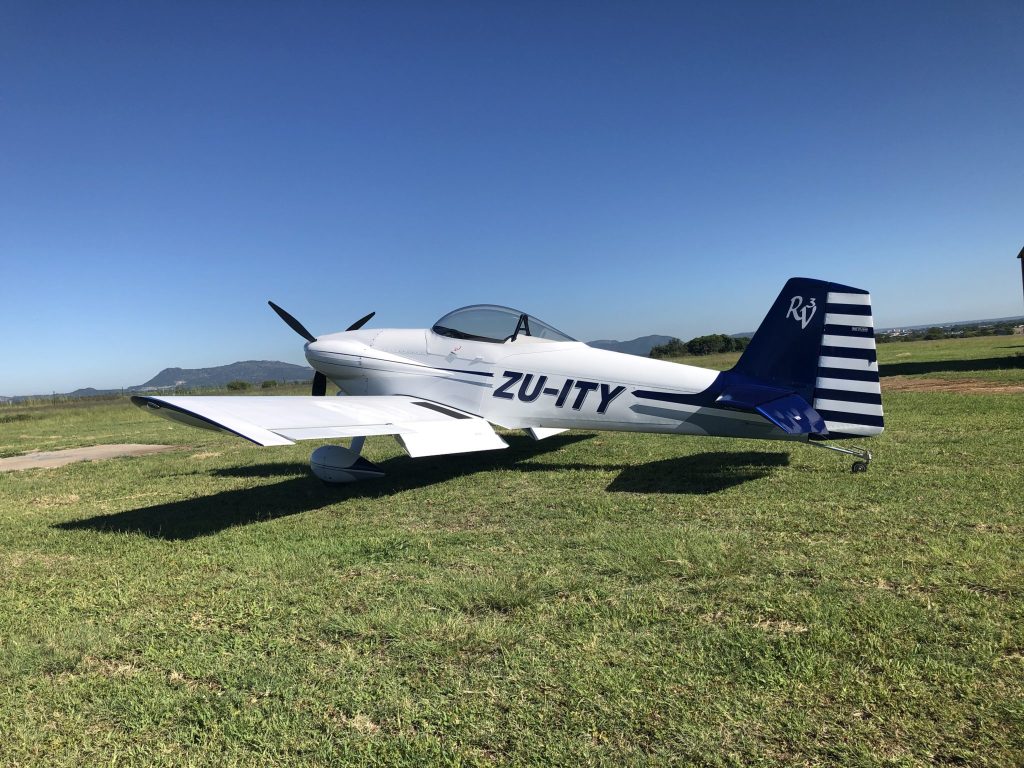
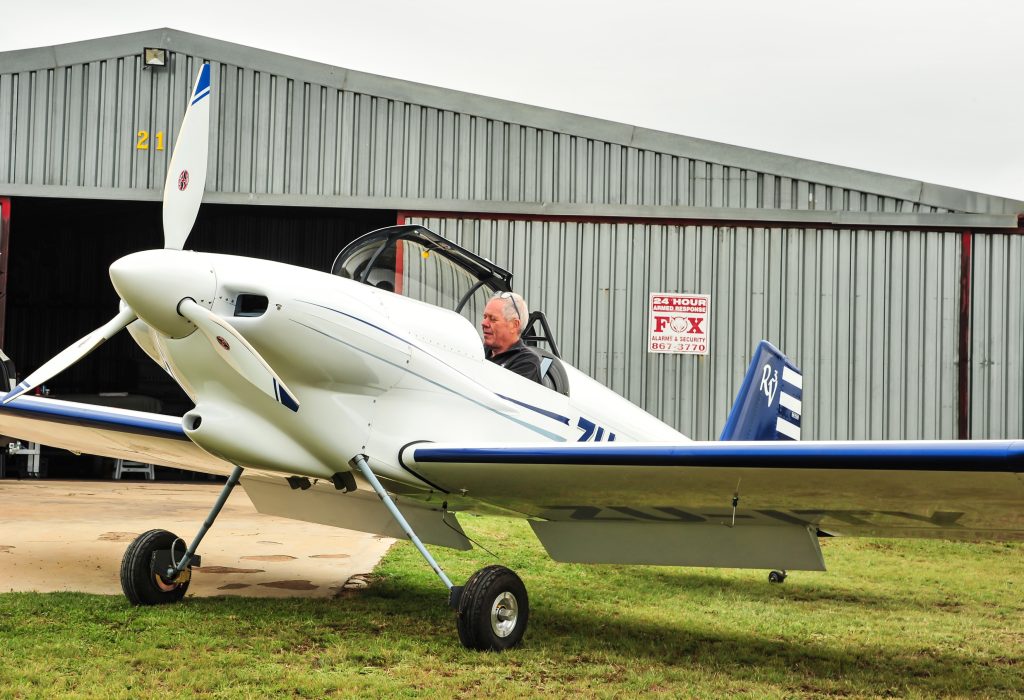
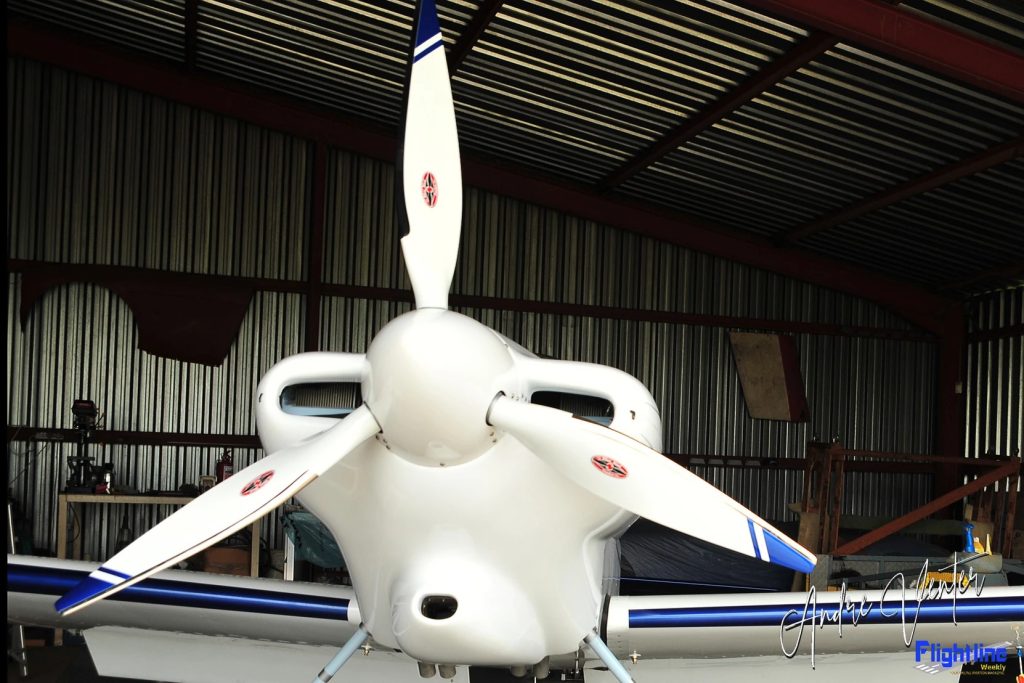
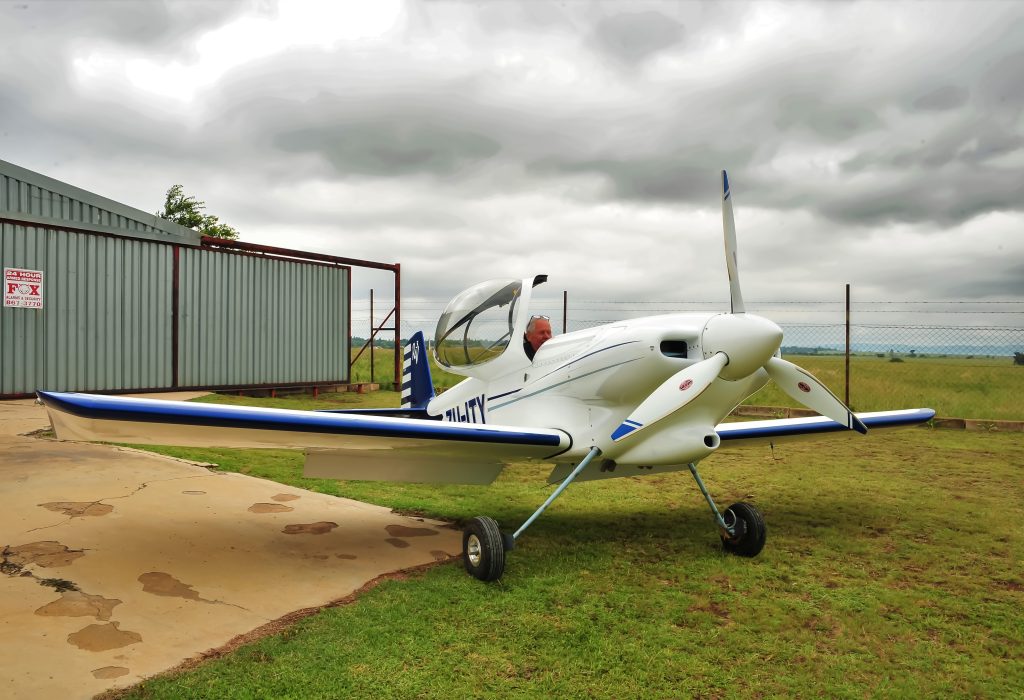
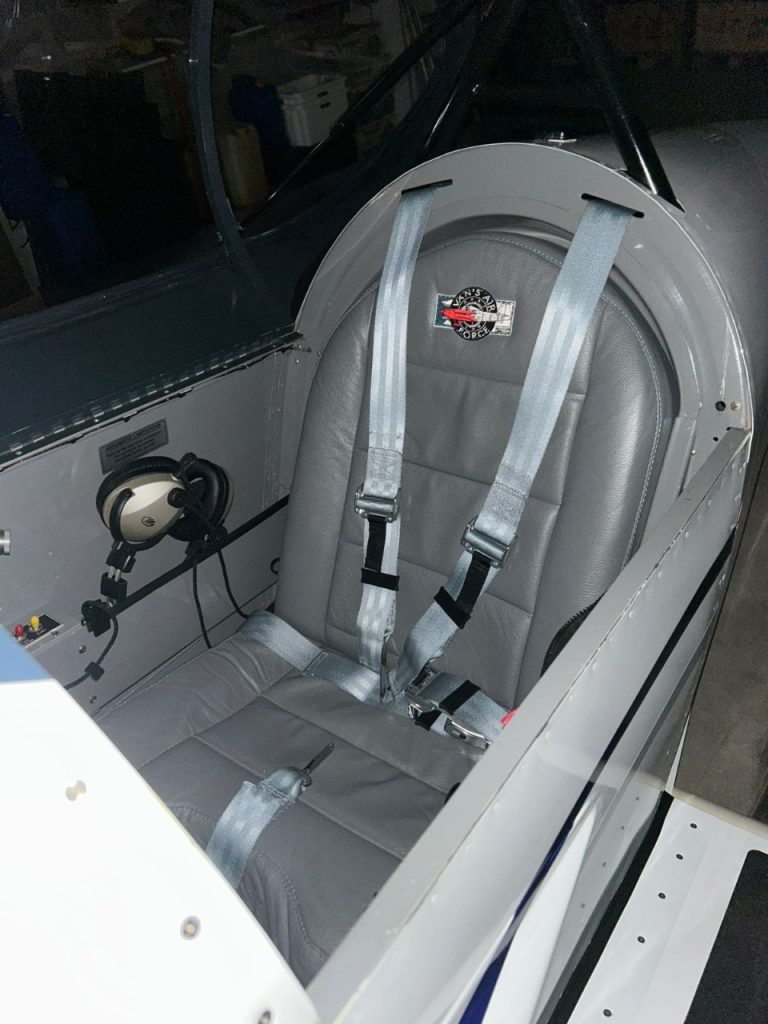
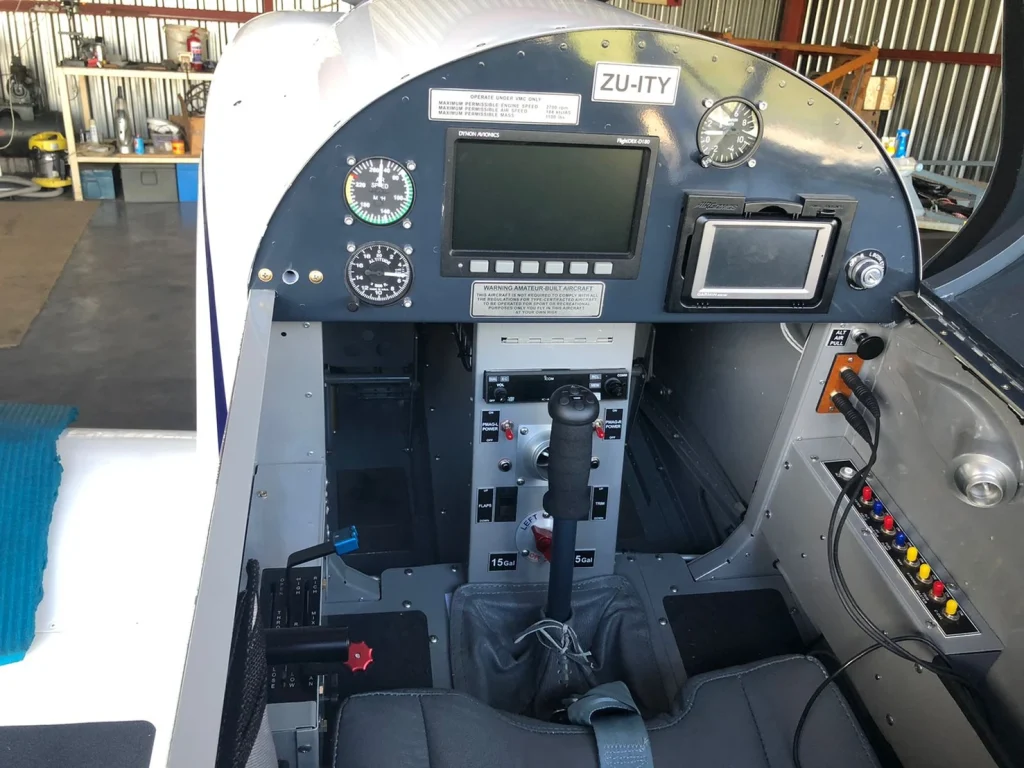
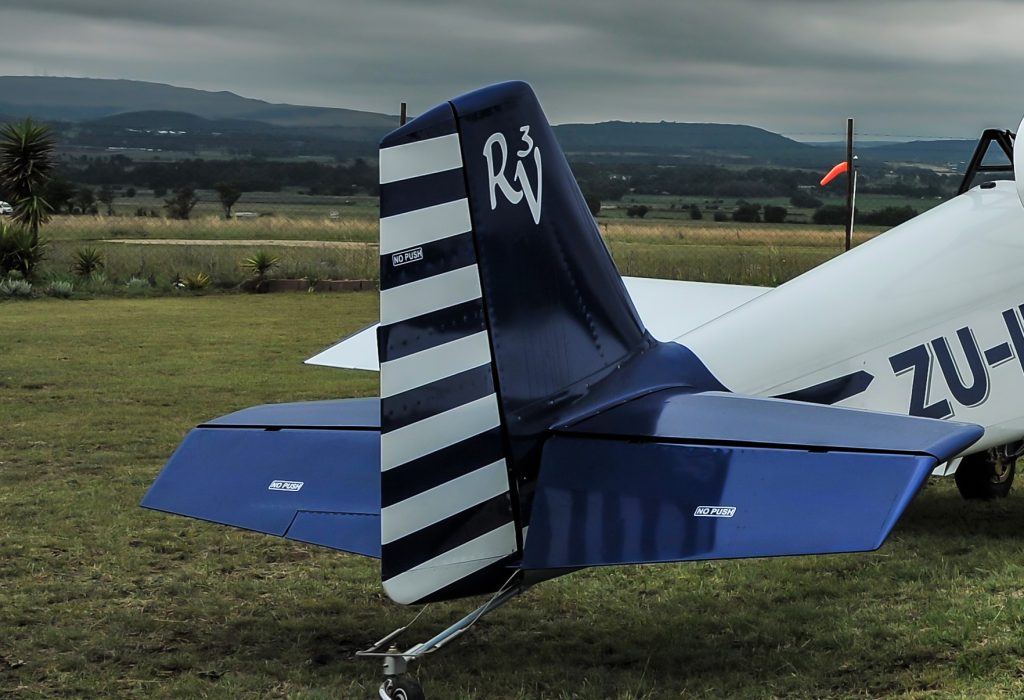
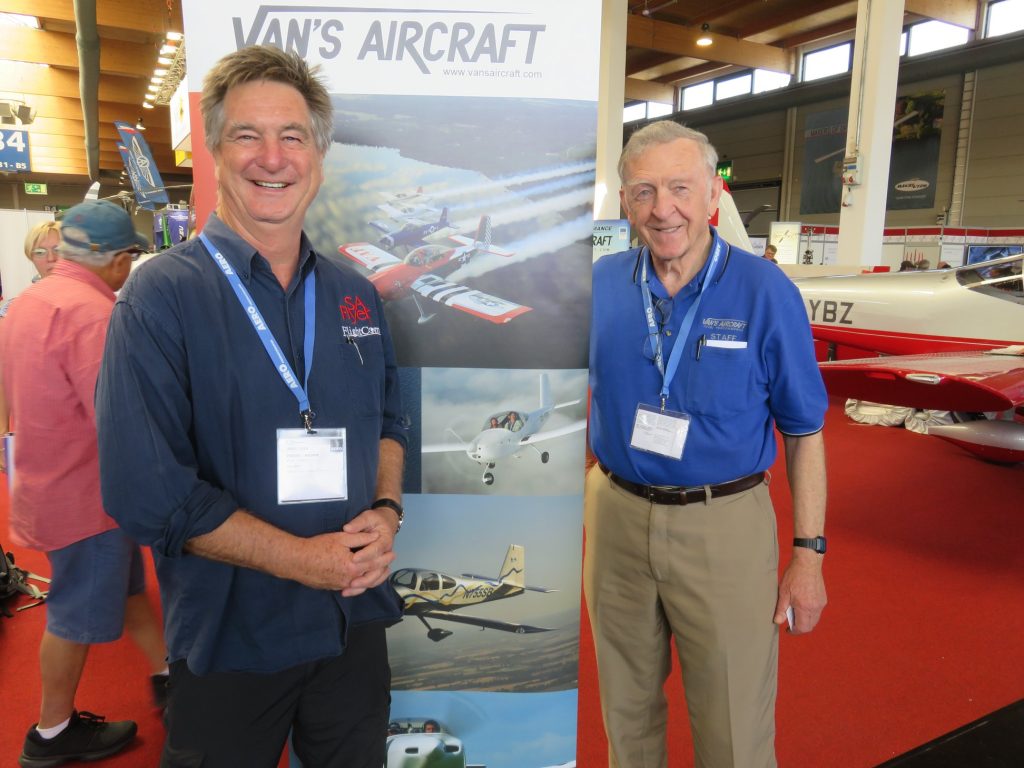
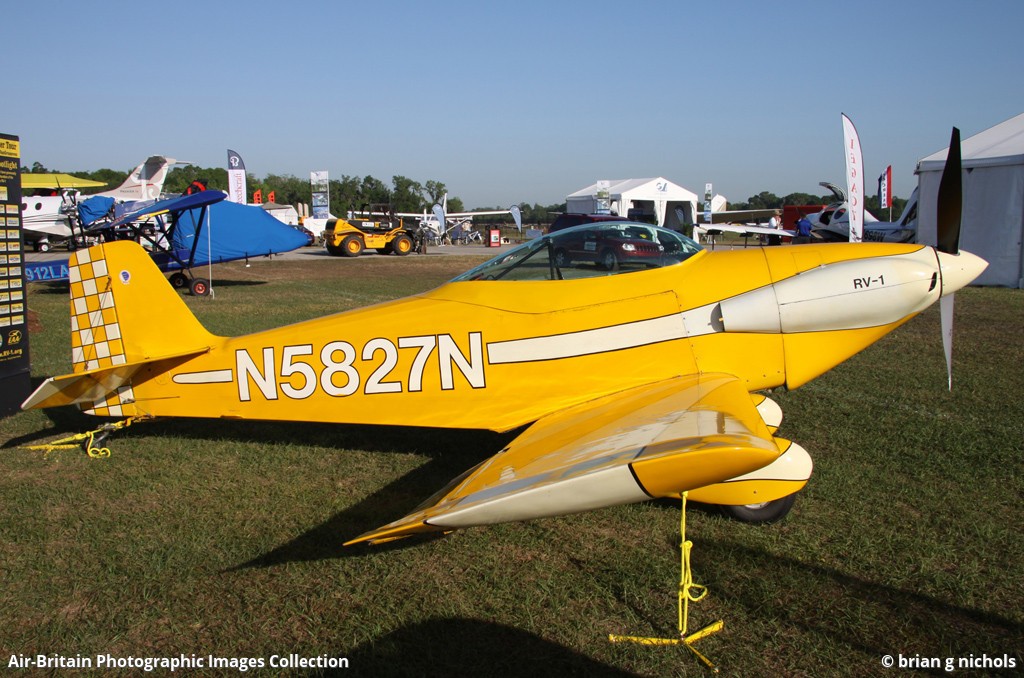
Flying the RV-3
Test pilot Trevor Warner test flew ZU-ITY from Panorama airfield. Reporting for Flightline, he said, “Carefully climbing into the tiny cockpit, I was very aware of just how small the RV 3 is. “Snug” comes to mind. However, I found the seating and general cockpit layout to be very comfortable.
“Start and taxi were straightforward, but what became apparent immediately was how light and sensitive the tail-wheel steering was on the ground. I cautioned myself against over-activity in that department during take-off and landing.
“Avoiding a lengthy run-up on a brand-new engine, with all systems operating perfectly, I lined up and slowly opened the throttle. With the 160hp I0-320 and the Whirlwind 3 bladed constant speed prop at 2650rpm, the little aerie is no sloth. Tail-up with no surprises, and seconds later we were airborne. What became apparent immediately was how hard I was pulling to hold the climb attitude. A little more aft trim and the RV 3 crossed the upwind threshold at about 500 ft, indicating 100 mph.
‘It soon became apparent that the roll rate is not disappointing and I would say it’s a little more sprightly in roll than any of the other RVs I’ve flown. An interesting characteristic of the RV-3 is that the elevator does not have horn balances as do all the other RV variants and as a result, she is surprisingly heavy in pitch.
‘I was soon impressed by the speed of the little plane, with the IAS settling at about 175 mph at 9 to 10 gallons/hour. That was without wheel spats and gear-leg fairings fitted. I am pretty sure that some RV-8 pilots are going to be hard-pressed to keep up.’
Bud Davisson reports on the slow flight stall and spin handling; “I chopped the power and got carb heat, holding the nose up all the while. Then I waited and waited. It took forever to get down under 50 mph, where it shuddered once, ever so slightly, and dropped its nose hard, as if trying to live up to the reputation many feel the NACA 21012 aerofoil deserves. It broke sharply, but rather than recovering, I held the stick back, curious to see what would happen. The nose fell a few feet, the plane picked up speed and started flying again then porpoised up into another stall. I was losing very little altitude as I seesawed up and down from stall to stall, keeping the wings level with both aileron and rudder. It was evident that the RV-3 has a wing that almost refuses to stall quickly, probably because of the planform and light wing loading. The stall recovery was instantaneous and the plane didn’t try to do anything weird like tucking a wing.
To barrel roll, I pulled the nose up, twitched the stick to one side and the small town on the distant horizon obediently curved up and over the nose. The rolls were indecently easy, so I started doing four points, then eight points, and finally a 15 point (I never could keep track). The plane would jerk to a halt so cleanly that I could almost hear each point squeak. The rate of roll was so high, and the speed bleed-off in verticals so low, that I soon found myself doing loops with slow rolls on the top, Immelmanns and Cuban eights with double and triple rolls on the recovery requiring nothing more than putting the stick to one side at the appropriate time.
The spins also were strange, primarily because I couldn’t hold the RV-3 in one. It would do about one turn and then fly out into a spiral like a Cherokee. I finally got it to spin a little longer by using some power.
I knew the landing was going to be no sweat. The hardest part was to force myself to approach at only 70 mph indicated. Van Grunsven said even 60 to 65 mph was okay, but 70 mph made me feel as if I were crawling—it was unnatural. I kept moving my patterns out until I could make a comfortable power-off 180° approach, using flaps to get rid of altitude when I wanted.
I made the first landing a wheelie, just to see what would happen—it was beautiful. I held it off and let it settle on main gear first, feeding just a little forward stick in to keep it planted when the tyres touched. That springy Wittman-type gear took up any bounce and let me motor straight ahead with no effort. The next couple were three-pointers and were noteworthy for only two reasons. During the flare, the aeroplane slows to a porcupine pace, and my mother could control the rollout.
“Everything about the way the aeroplane flies is slightly out of character with Its appearance, but its landings are too good to be true. In a three-point, you don’t roll more than 200 to 300 feet, and you could be manicuring your toenails through the whole thing. It ranks with a Fly Baby or a Citabria for docility, but is actually easier to land than either, especially when you consider that you were blasting along at 170 mph only moments before. If you can fly any taildragger, you’ve got the RV -3 knocked.
Conclusion
Davisson writes, “The old axiom about all aeroplanes being compromises wilts a little when the RV-3 is studied closely. Van Grunsven uses the term total performance to describe it. Until I flew the plane, I didn’t honestly believe him. Now, I do. It really is an everything aeroplane for the anything pilot.”
Trevor Warner says, “I have heard it said that the most delightful Van’s aeroplane is the RV-3 and now having had the privilege of flying one, I am inclined to agree. If you enjoy fun, responsive, seat-of-your-pants flying — and doing it solo — there is simply no better way to do it than in an RV-3.”
When Van designed the -3 as his first attempt to break into the homebuilding market , he wasn’t trying to build the fastest aeroplane, nor one with the shortest takeoff roll, nor one that would win an unlimited aerobatics title. He wanted an aeroplane that was very good at as many things as possible, even if it wasn’t necessarily the absolute best in any single category. That he succeeded beyond his wildest dreams is evidenced by the 12,000 RVs flying, and the many thousands more under construction.
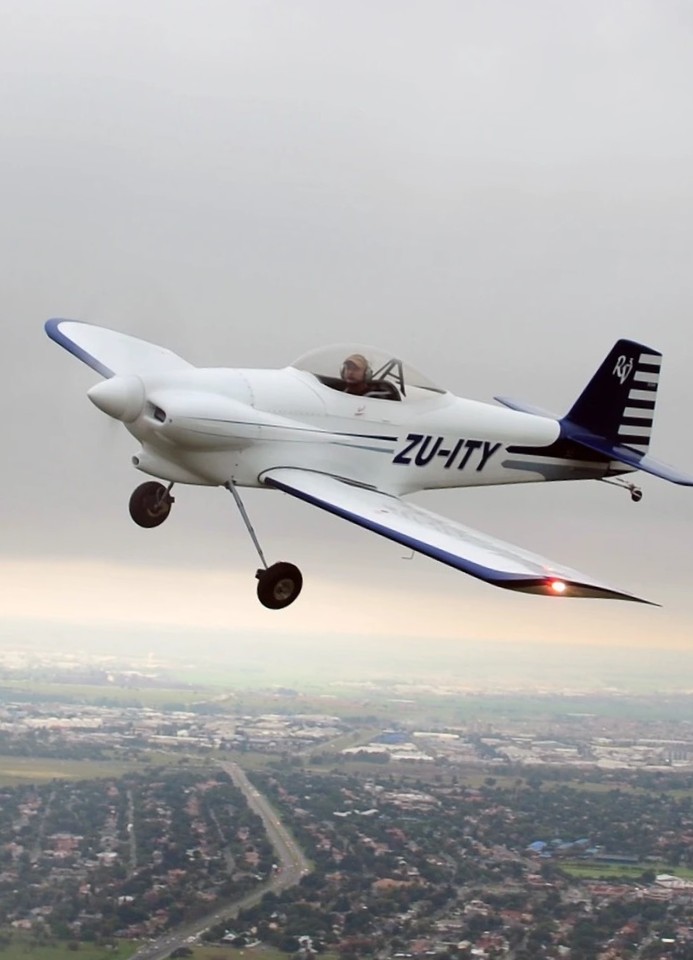
Building the RV-3
Writing in Flightline, Neil Murray said; “The RV 3 proved to be quite a challenging build as the instructions are sometimes very vague and don’t always match up to the drawings. Unlike the later RV kits, there are no pre-punched holes, so all measurements need to be carefully laid out and all rivet holes drilled and then dimpled etc before riveting.
One of the most challenging aspects of the riveting was the turtle deck. Fortunately, I was able to lie down in the tiny rear fuselage to buck the rivets all the way to the back with a mate doing the riveting from the outside.
I opted to fabricate the cowl cheeks myself out of fibreglass rather than use the “almost impossible to shape” Alclad that Vans supplies. I did the same with the tip-over canopy skirt, manufacturing a one-piece skirting instead.
Next was trial mounting the IO-320 Lycoming which was sourced from my good friend and AP Peter Lastrucci. I chose the Whirlwind 151H three-bladed constant speed prop primarily for its ultra-lightweight at only 31 lbs (but more expensive) compared to a Hartzell at 59 lbs.
I chose the quick-build wings as a time saver as Vans now supplies the “B” wing with the redesigned beefed-up main spar which is rated for +6/-3g loading. The wings were then fitted to the fuselage for final control surface rigging and then removed for painting. All the spraying was then done in my home-built spray booth. Then I started reassembling, mounting the engine and trying to figure out where to put everything on the very small firewall.
There’s not enough space for the prop governor so I had to hack a huge square hole in the firewall and fit a recess that can be purchased from Vans. The next challenge was all the wiring and fitting all the interior components, instruments and seats etc.
The Lycoming IO 320 was finally reattached to the airframe and most of the accessories were fitted. Cables were routed and then re-routed due to the very small and inaccessible space between the firewall and engine. All oil hoses and fuel hoses made and fitted.
I opted to fabricate an electric elevator trim mechanism that is housed under the vertical stabiliser as there is no space in the elevator as in all the other RV models. All internal fitment of stuff followed, more final wiring done, all electrics checked and radio checked for proper operation.
Next came setting the timing on the two P-Mag-E Mags. I cranked the motor with plugs out and ignition off to get the oil pressure up. Then I refitted plugs, primed and cranked her over. The motor started after three turns and ran like a dream.
Once all my paperwork was done, I approached Trevor Warner to take the -3 on her maiden flight and he was only too happy to oblige.
